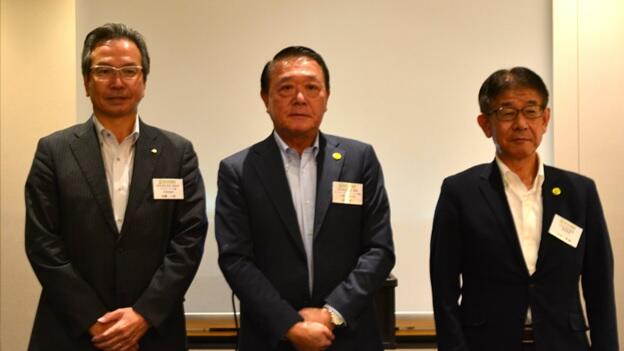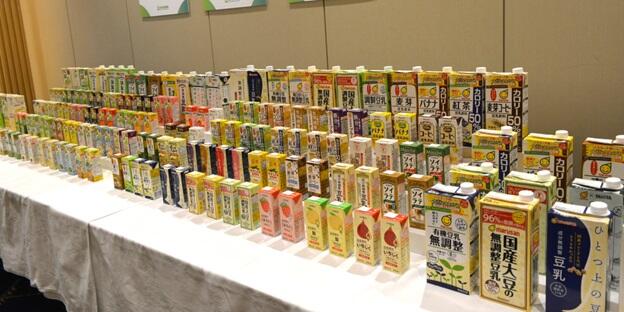On July 16, the Japan Soymilk Association (Chairman: Koichi Yamazaki) held a press conference about the activities of the association at the Foreign Correspondents' Club of Japan in Chiyoda City, Tokyo Prefecture, to announce market trends of soymilk and other information. Associate Professor Hideki Kinoshita of the Department of Food and Life Science, Faculty of Agriculture at Tokai University, attended as a guest and introduced recent research results on fermented soymilk products.

Provided by the Japan Soymilk Association
In the soymilk market, when the association was established about 40 years ago, the product was successful, and the annual production volume was about 100,000 kiloliters. Following this, it declined to about 20,000 kiloliters in the 1990s. The volume gradually increased in the 2000s, reaching approximately 100,000 kiloliters in 2003 and 210,000 kiloliters in 2005. From 2008 onward, it continued to increase until 2020, reaching a peak at approximately 430,000 kiloliters in 2020 because people tended to dine in due to the COVID-19 pandemic in 2019.
In recent years, production volumes have been around 400,000 kiloliters, reflecting price hikes due to soaring raw material prices. The association considers this trend attributable to consumers' increased health awareness and manufacturers' efforts to make soymilk easier to drink and tasty, such as improvements in manufacturing methods.

Provided by the Japan Soymilk Association
A survey by the association identified a certain number of people who had never tried soymilk, and the association will actively run new projects and campaigns this year to attract new users. The association plans to hold events, including tasting sessions at sightseeing spots and lodging facilities across Japan, over a period of about three days, including October 12. The association will also host events jointly with restaurants over a period of about a month in October. Moreover, the association will conduct a consumer survey for the first time.
Kinoshita, who participated as a guest, has conducted extensive research on the functions of lactic acid bacteria and fermented foods, as well as the development of, and exploration of, superior strains of lactic acid bacteria. In experiments in mice, he has shown that consumption of soy yogurt made by fermentation of soymilk is expected to increase inhibitory activity against the generation of advanced glycation end products, substances associated with aging, and may be suitable for patients with diabetes and people with subclinical diabetes. He has also reported that soy yogurt consumption can suppress cognitive decline and hippocampal inflammation associated with high-fat diet-induced obesity in mice and that it increases the abundance of intestinal butyrate-producing bacteria, which is beneficial. Soy yogurt is thought to be more easily absorbed by the body than soymilk due to lactic acid bacterium-mediated breakdown. Moving forward, he aims to test the effect on humans.
Soymilk is a low-glycemic-index food containing various beneficial substances, such as soluble dietary fiber, proteins, vitamins, and minerals, and has been confirmed to prevent blood glucose spikes and promote the expression of adiponectin, which stimulates vascular repair.

Provided by the Japan Soymilk Association
This article has been translated by JST with permission from The Science News Ltd. (https://sci-news.co.jp/). Unauthorized reproduction of the article and photographs is prohibited.




